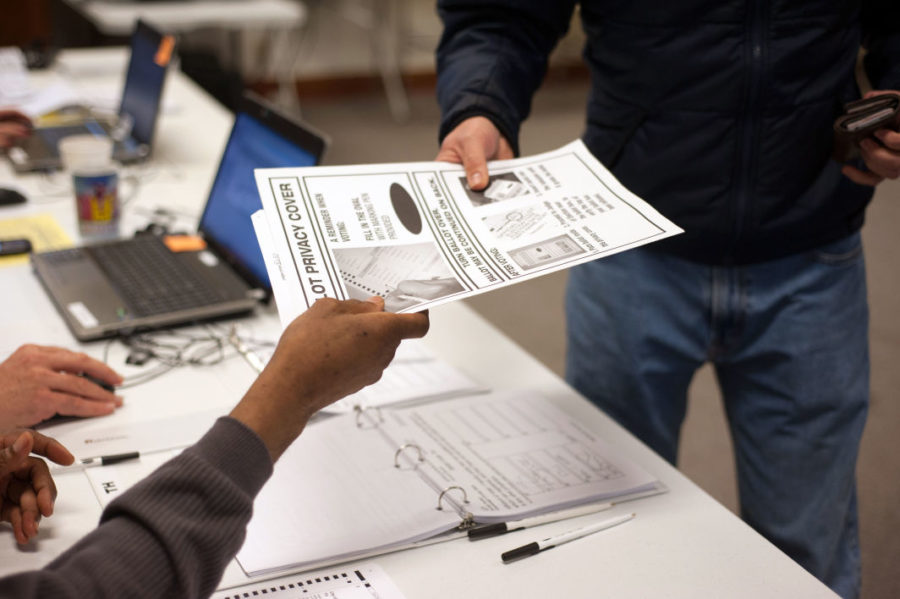Voter turnout lowest since WWII, youth vote just 13 percent of total electorate
Nov 13, 2014
Last updated on May 10, 2016 at 11:57 p.m.
Voter turnout in the 2014 midterm election was the lowest it has been since 1942, when the United States was engaged in World War II.
According to early projections by the United States Election Project, just 36.3 percent of the eligible voting population turned out at the polls on Election Day this year. Voters aged between 18 and 29 years old comprised a mere 13 percent of the national electorate in the 2014 election cycle, six percent less than in 2012.
In Champaign County, roughly 48.5 percent of registered voters cast their ballots this election cycle.
“People’s engagement in politics is limited,” said Kent Redfield, emeritus professor of political science at the University of Illinois in Springfield. “Some people follow politics all the time, most people don’t, so you have to get their attention, and then they have to devote a certain amount of energy commitment to voting.”
Get The Daily Illini in your inbox!
The midterm electorate is very different from the electorate of presidential elections, Redfield said. While young voters, along with all other age groups, traditionally turn out in fewer numbers for midterm elections than they do for presidential elections, midterm voters are typically more partisan and have voted in multiple elections.
“As a proportion of the electorate, young voters tend be have a lower proportion of voters in midterm elections because historically they are less committed voters,” said Tom Rudolph, professor of political science. “When attention to the campaign is less, when there isn’t a president on the top of the ticket, less committed voters of all types are less likely to vote.”
To some extent voting is a habit, Rudolph said, and younger voters simply have not established that habit. According to Rudolph, voters aged 45 and up, who comprised 65 percent of the electorate in 2014, have likely voted multiple times and as a result, are more likely to vote again.
Unfamiliarity with the voting process is far from the only reason that young voters participate in the electoral process at a significantly lower rate than older generations; they can have additional obstacles to the voting booth that older voters may not have to deal with.
“Another obstacle that young voters face, particularly college students, is that they often are registered back at home and have extra work to do to vote,” said Rudolph. “Either they have to arrange to get an absentee ballot to vote at home or travel home to vote in person, or go through the extra effort of switching their registration to where their college is located.”
Millennials in particular may be less likely to jump through these hoops on Election Day because many are disenchanted with the electoral process as a whole. If voters are cynical toward the government and their leaders, or feel as though their vote doesn’t matter, they will be less likely to cast a ballot, said Redfield.
“People are dissatisfied with governmental institutions and political parties and public officials, and they’re very cynical and pessimistic about the possibility for things to change,” Redfield said. “People have to have some sense that the process is legitimate, that the process works, and that good people can get in and make things work.”
Politicians themselves also play a role in the low youth voter turnout rate, he said. Candidates tend to focus their campaign’s resources and outreach on the groups that they believe will turn out in greater numbers on Election Day.
“It’s a dilemma for the parties and the candidates because you’re trying to get returns for your dollar,” Redfield said. “So when you don’t reach out to young voters because you think your money is better spent elsewhere, it becomes this self-fulfilling prophecy.”
Despite being frequently overlooked by politicians, there are independent groups that recognize the importance of the youth vote and work to mobilize younger voters on Election Day.
Rock the Vote, a non-profit, non-partisan organization, worked with its partners to target and register nearly 700,000 millennial voters in the months leading up to the 2014 election.
“Our message to young people is clear,” Ashley Spillane, president of Rock the Vote, said in a statement. “Millennials have the potential to wield tremendous political influence simply by turning out to the polls and making their voices heard on the issues they care about.”
Josh can be reached at [email protected]






